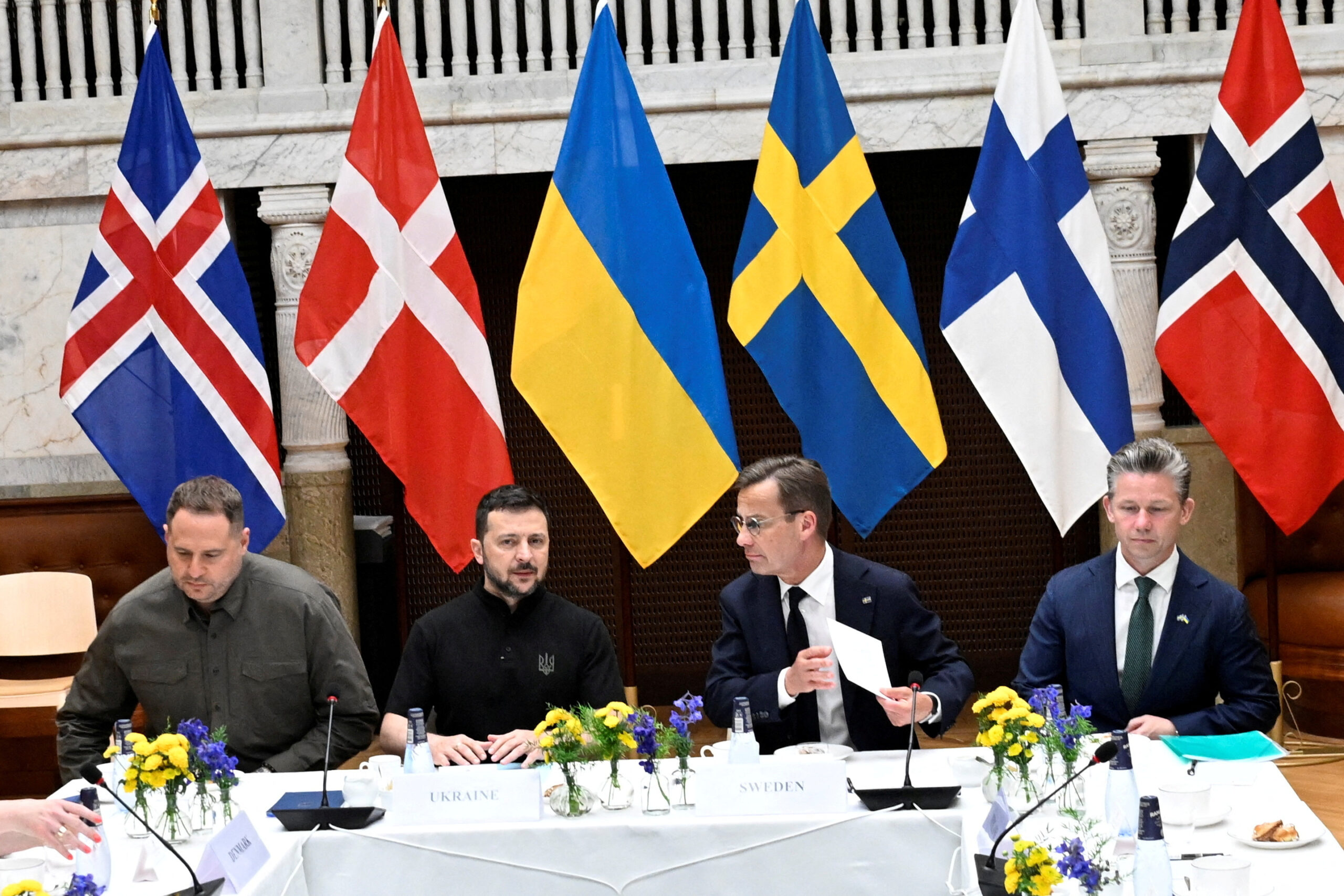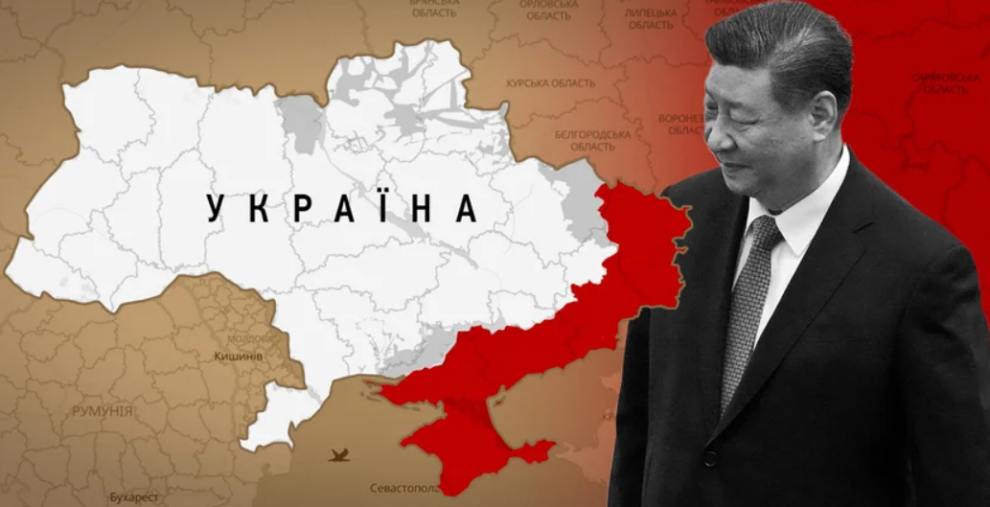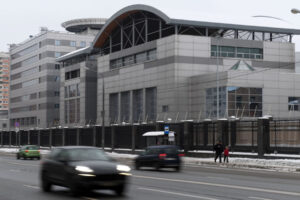NV has identified specific Chinese companies that are rebuilding factories on Russian-occupied land in eastern Ukraine, supplying local firms with industrial equipment and other goods.
At least a dozen private Chinese companies are actively cooperating with businesses in the occupied areas of Donetsk and Luhansk oblasts, providing them with either equipment or other products. NV reached this conclusion after analyzing open sources, including publications from Russian propaganda media and reports from occupation “administrations,” as well as speaking with domestic experts who monitor developments in Russian-occupied areas of Ukraine.
Chinese companies are not only supplying equipment but also sending business representatives to occupied territories, establishing joint ventures, and actively engaging local labor forces.
These Chinese contacts span various industries—from energy and agricultural infrastructure to light industry.
“At present, the Russians lack the financial resources to develop the occupied Ukrainian lands,” said Pavlo Lysyansky, director of the Institute for Strategic Studies and Security.
“That’s why the Kremlin is trying to involve Chinese companies in investing in these regions.”
China’s Share
The first significant contacts between Chinese businesspeople and enterprises in the occupied parts of Donetsk and Luhansk took place in the spring of 2023. That was when the Canton Fair, an import and export exhibition, was held in Guangzhou.
According to the occupation media outlet ZOV DNR, one participant was Artyom Zhikharev, an advisor to the general director of the so-called “state” company Nadra from the Moscow-controlled proxy “DNR” (Donetsk People’s Republic). He also visited mining equipment factories in Beijing, Zhengzhou, Jinan, and Taiyuan.
Shortly afterward, Chinese company Liming Heavy Industry Science & Technology, a manufacturer of crushing, screening, and milling equipment, reportedly supplied Nadra with stationary crushing plants, vibrating feeders, and additional equipment to launch an ore processing plant.
That same year, the Karansky Quarry in occupied Donetsk Oblast, signed cooperation agreements with two Chinese industrial equipment manufacturers: Amma Construction Machinery Shanghai, which produces rock-crushing equipment, and Zhongxin Heavy Industrial Machinery, a manufacturer of crushing and sorting machinery.
Russian state propaganda agency TASS reported that the Chinese companies committed to overseeing commissioning and production processes at a new mineral powder manufacturing plant at Karansky Quarry.
By the following year, this crushing and sorting plant had been fully operational.
Chinese business interest also extended to the remnants of the coal industry in occupied Donetsk. Mining equipment manufacturer Sany Heavy Industry delivered tunneling machines to Impex-Don, a company operating under Russian occupation in the region. This information was reported by the so-called “Donetsk News Agency,” citing Impex-Don’s deputy general director, Anatolii Antoniev.
Sino-Russian ‘Investment’
In 2023, Moscow hosted the All-Russian Congress on Comprehensive Territorial Development, attended by “officials” of its proxies in Ukraine’s Donetsk and Luhansk oblasts.
According to the congress’ website, China’s experience in large-scale urban development was showcased at the event. One of the invited speakers from China was Wang Dongtao, assistant general director, secretary of the party committee, and general director of investment and finance at Heilongjiang Construction Investment Group.
Meanwhile, representatives of the occupation “administrations” are making increasingly frequent visits to China.
In 2024, the first Russian-Chinese Construction Forum took place in Heilongjiang Province. Attendees included Yevgeny Solntsev, head of the so-called “DNR government,” and representatives of the Donbas Development Corporation. This was reported by Russian propaganda newspaper Komsomolskaya Pravda.
At the forum, what the “DNR” authorities” called their “investment potential” was presented to the leadership of Wisdri Engineering & Research Incorporation Limited, a Wuhan-based metallurgical design and research institute already involved in several projects in Russia. Solntsev attempted to persuade institute representatives to participate in the launch and modernization of metallurgical enterprises in occupied Donetsk.
Meanwhile, the Kremlin is acting on a larger scale, trying to integrate the occupied territories into the *Europe-Western China* international transport corridor, which spans 9,000 km. Within Russia, this 2,400-km trade route links three major urban centers—Moscow, Kazan, and Samara.
Currently, Russia is building the Rostov-on-Don – Mariupol – Melitopol – Simferopol highway, stretching 635.6 km through Russia’s Rostov Oblast and the occupied Ukrainian Donetsk, Zaporizhzhia, Kherson oblasts, and Crimea. Through this route, the Russians aim to attract as many Chinese companies as possible to the Ukrainian territories they have seized.
According to local propaganda outlet Khersonskoye, a group of Chinese businessmen visited the occupied coastal part of Kherson Oblast in 2023, specifically the village of Khorly and the city of Skadovsk. Russian officials attempted to interest the entrepreneurs in local ports and the potential supply of agricultural equipment to the region.
Attempting to bind China
According to an expert who spoke to NV on condition of anonymity, exports from Russian-occupied areas of Donetsk in the first half of 2023 were directed to five countries—China, Turkey, Syria, Belarus, and Kazakhstan—as well as one unrecognized pro-Russian entity, Abkhazia. More than half of this trade flow (51.8%) consisted of metals and metal products, while the rest included mineral products, foodstuffs, and agricultural raw materials.
Meanwhile, Lysyansky cites information from his sources, indicating that by the end of 2023, China accounted for 60% of total imports into occupied Luhansk Oblast. These imports included foodstuffs, agricultural raw materials, electrical machinery and equipment, spare parts, and chemical industry products. Lysyansky concludes that private Chinese companies maintain contacts with the occupation “administrations” at all levels, with Moscow actively lobbying for these ties. The reason is that Russia cannot independently rebuild the war-torn regions and is seeking to address this by attracting Chinese manufacturers and investors.
In turn, Ukrainian political analyst Petro Oleshchuk believes that the growing Russian-Chinese partnership in Ukraine’s east and south have a foreign policy dimension. Moscow is working to involve Beijing as much as possible in the largest European armed conflict since World War II, he suggested.
The Kremlin is doing this not only through state mechanisms but also via business partnerships. According to Oleshchuk, Russia’s logic is as follows: “The more China is involved in business operations in the occupied territories, the more interested it will be in Russia maintaining control over them.”
“The Kremlin offers favorable conditions to China and its businesses in the occupied territories [of Ukraine],” the expert argues.“In response, China promotes the narrative through all diplomatic channels that the occupied regions should remain under Russian control. Essentially, this is a form of business lobbying, but with the specific goal of legitimizing Putin’s military aggression at the international level.”
































